
In maritime container transportation, whether it is Full Container Load (FCL) or Less than Container Load (LCL), the containers are generally provided by the carrier (i.e., the shipping company).The shipping company’s containers are continuously cycled and reused.Containers are an important component of the shipping company’s assets.However, the cargo owner, shipper, or consignor can also choose not to use the shipping company’s containers and instead purchase or lease their own containers. This situation is referred to asShipper’s Own Container, abbreviated asSOC. The corresponding term isCOC, which stands for Carrier’s Own Container.
There is not much operational difference when cargo owners, shippers, or consignors use their own containers. However, some shipping companies may not accept SOC containers. Of course, shipping companies that do accept SOC containers will have certain requirements for the containers, such as compliance with relevant standards and regulations for maritime container transportation.
Generally speaking, the shipping costs for SOC containers may be lower, or the shipping company may charge less, as there are no shipping company containers in use, which reduces the container usage fees for the shipping company. In fact, the container usage fees are included in the shipping costs, and only exceed a certain period, such as picking up the container 10 days before sailing (usually free within 7 days) or not returning the container to the shipping company within 14 days after arriving at the port (usually free within 14 days), will additional container usage fees/detention fees be charged.
For exports, if the cargo owner, shipper, or consignor uses their own containers, the containers may be sold directly to the customer after arriving at the destination port, or “given” to the customer, or they may be loaded again for import and returned to the domestic cargo owner, shipper, or consignor.
If the empty container is returned domestically without goods to load, the return cost is purely a cost expenditure. This cost, when combined with the export shipping cost, will result in the total cost of using SOC containers being higher than directly using the shipping company’s containers. Therefore, SOC containers are generally not used in this way unless the SOC container is a special type that the shipping company does not have, and the customer does not need the container, and the container has a relatively high value, making it necessary to return the empty container.

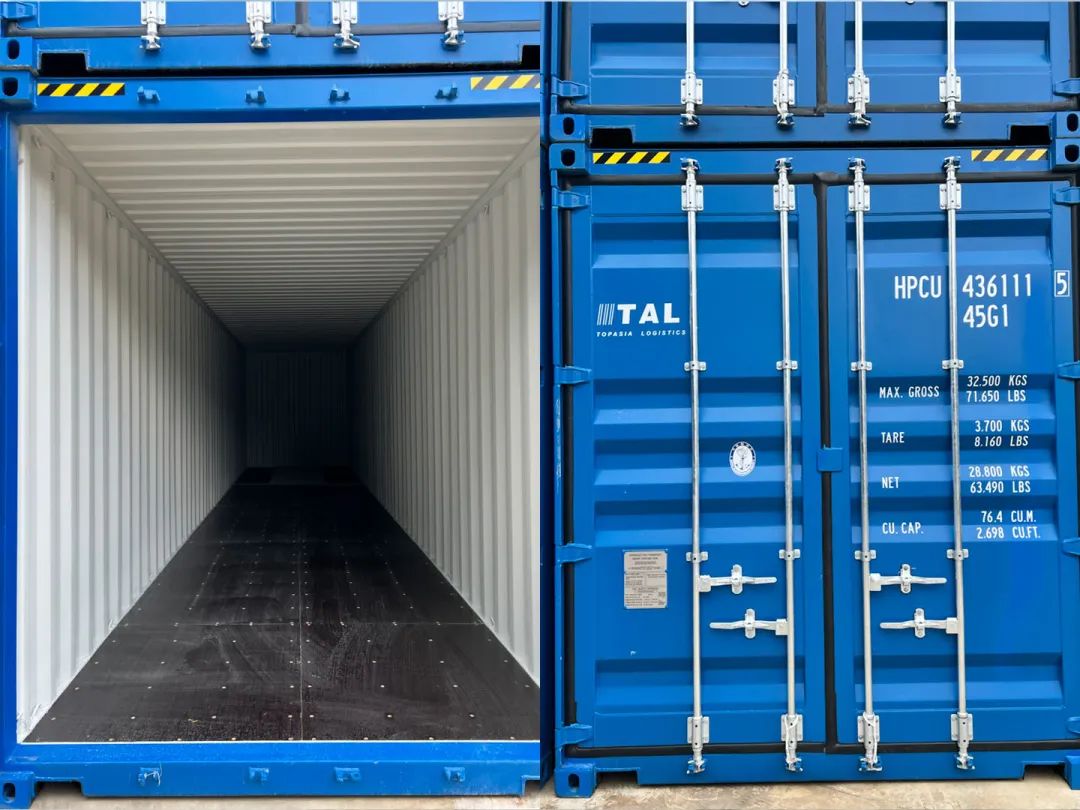
To officially become a globally circulating container, it must be registered with theInternational Container Bureau (France) for prefix registration, for example, the prefix YCPU for the containers owned by Yancheng Port Group has been registered (certificate number: YCPU-2121).

To ensure maritime navigation and cargo transportation safety, starting from today, the shipping company ONE will implement the following regulations for booking Shipper’s Own Containers (SOC):
1. SOC containers without a valid International Convention for Safe Containers (CSC) certification will not be accepted for booking;
1.1 A SOC container nameplate (CSC) must be provided;
1.2 Clarify whether the SOC container is a second-hand container;
1.3 If the ACEP on the SOC container nameplate (CSC) has expired, please arrange for inspection and update the CSC; otherwise, shipment will be refused, as shown in the figure below:
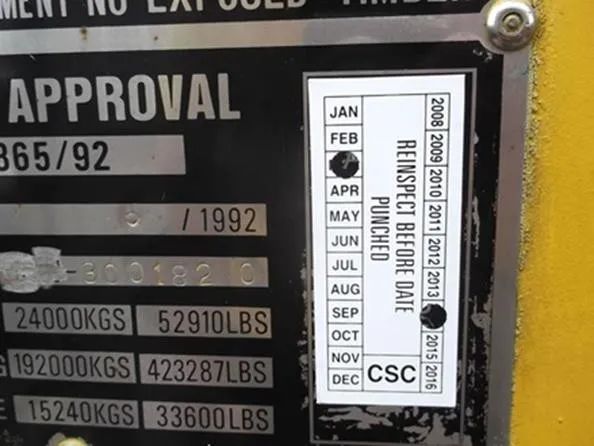
1.4 Statement regarding the maintenance and inspection of Shipper’s Own Containers:
Once the container is sold, the buyer is responsible for maintaining the container according to their own maintenance and inspection procedures. Regardless of the condition of the container, all responsibility for the safety of the container transfers from the seller to the buyer. Once ownership of the container is transferred to the buyer, and the buyer wishes to use the container for international transportation, the buyer must ensure compliance with the CSC.
1) If the buyer has an approved ACEP, the buyer’s ACEP reference number should be appropriately marked on the container.
2) If the buyer does not operate with an approved ACEP, the container must be marked with the next inspection date (NED) according to the requirements of the regular inspection plan. The next inspection date should reflect the condition of the container, and qualified personnel at the place of sale are responsible for determining the next inspection date that reflects that condition. Typically, qualified personnel can issue an NED up to 30 months in advance or an NED allowing the container to be shipped to a new destination, usually requiring 3 or 6 months.
By marking the container in this way, the cargo owner indicates that they are and will be conducting inspections and maintenance in accordance with CSC requirements to ensure high personal safety during the loading, stacking, and transportation of the container.
2. Below is the updated list of prohibited prefixes for SOC containers. If the SOC prefix is already on ONE’s restricted list, then booking will not be accepted regardless of whether the shipowner is ONE. If the SOC prefix is not on ONE’s restricted list, we will accept bookings according to the shipowner’s restrictions.
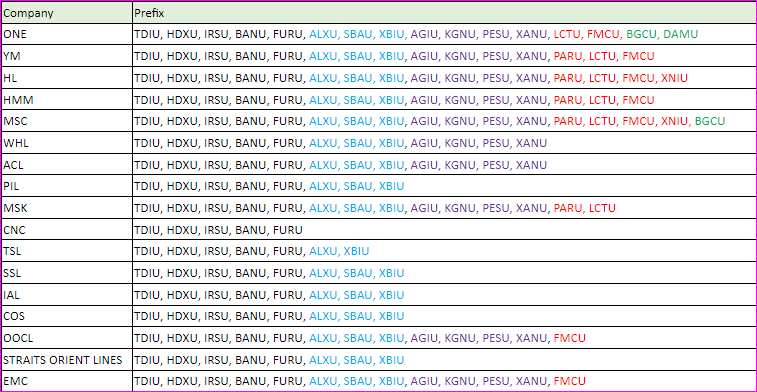
3. SOC containers must not be returned to ONE’s empty container yard after being emptied; any storage fees, stacking fees, management fees, etc., incurred as a result will be borne by the customer.
4. Cargo owners’ self-provided heating containers, if the control panel is located on the side of the SOC container, preventing crew access for monitoring, will be prohibited from being loaded onto the ship.
5. No bookings for any import and export SOC containers between China and Pakistan will be accepted on OOCL vessels.
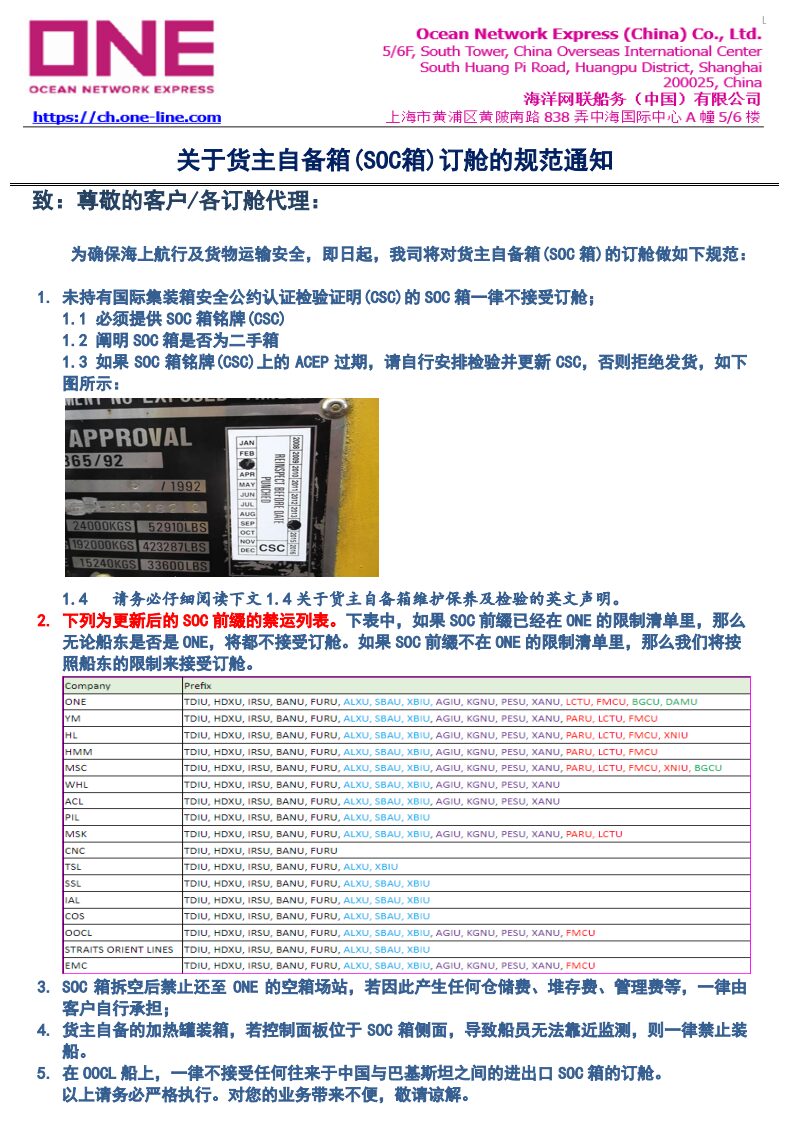
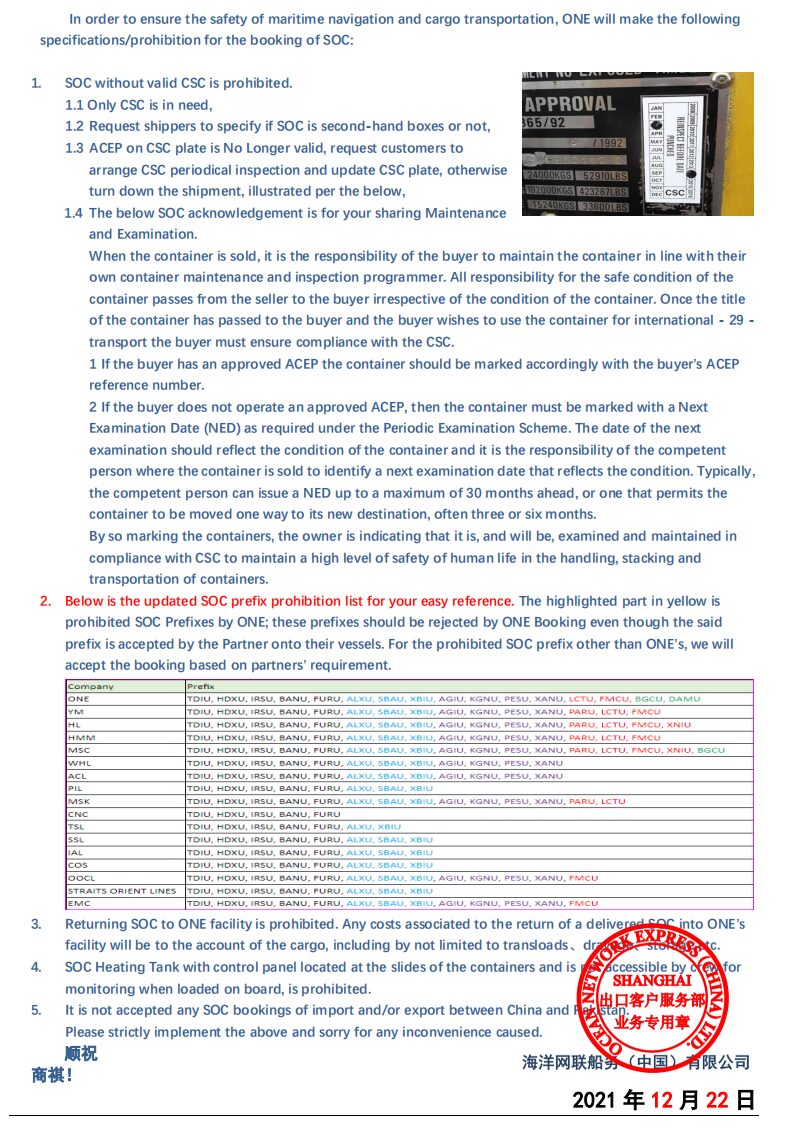
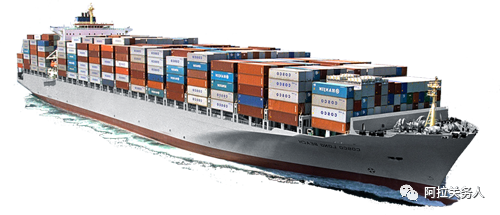
On April 29, 2019, the Ningbo Zhoushan Port container export empty paperless business went online, achieving an online ratio of 95%, with the remaining 5% being SOC container export business, that is, cargo owners using their own containers for export. Due to the uncertainty of information regarding the SOC container owners, booking shipping companies, etc., this business model became diverse, and the design of the paperless process became more challenging, becoming the “hard nut to crack” in the final stages of the empty paperless export process. At the same time, due to the impact of the pandemic, shipping companies faced severe container shortages, leading to an increasing proportion of SOC containers in total container volume, resulting in higher customer demand for SOC container paperless processes.
Reproduced from: Alagu Customs Personnel
【Disclaimer】: The articles published on this WeChat platform, except for those marked as 【original】, are recommended by various media platforms or WeChat fans. If reproduced, please indicate the author and source, and we will include them accordingly. If not specifically stated, we will assume it is a network reproduction. If the original author sees this and finds it inappropriate, please inform us, and we will delete it immediately and apologize! Phone: 0536-8813386. Authors are welcome to submit directly to [email protected].


Long press the QR code to quickly follow the Weifang Supply Chain Association’s public account!